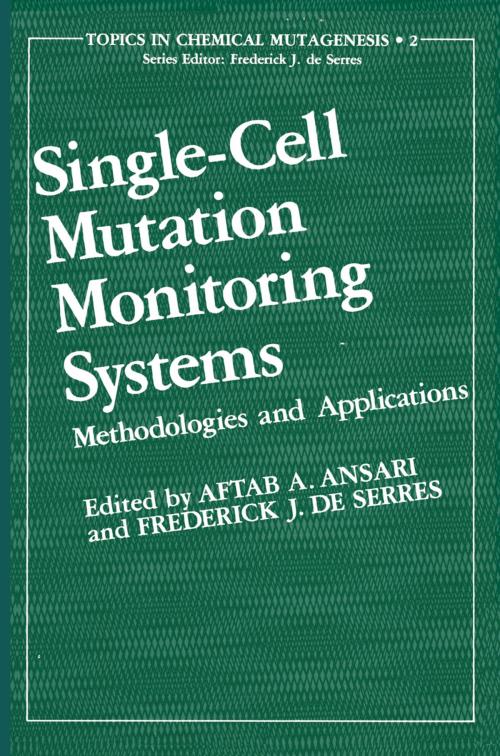Single-Cell Mutation Monitoring Systems
Methodologies and Applications
Nonfiction, Health & Well Being, Medical, Veterinary Medicine| Author: | Aftab A. Ansari | ISBN: | 9781468446647 |
| Publisher: | Springer US | Publication: | December 6, 2012 |
| Imprint: | Springer | Language: | English |
| Author: | Aftab A. Ansari |
| ISBN: | 9781468446647 |
| Publisher: | Springer US |
| Publication: | December 6, 2012 |
| Imprint: | Springer |
| Language: | English |
There is general agreement that increased environmental pollution poses a potential health hazard to humans and that effective control of such genetic injury requires monitoring the exposed individuals for genetic damage and identifying chemicals that may cause mutation or cancer. Tests available for identifying mutagens or carcinogens range from relatively simple, rapid assays in prokaryotes and test systems utilizing mammalian cells in tissue culture to highly elaborate tests in intact animals. No single test can provide data for an unequivocal assessment of the mutagenicity of a given chemical and the risk it might pose to human health. A tier approach, therefore, was suggested for mutagenicity testing in which the suspected agents would be initially evaluated with simple, inexpensive tests that would give qualitative results. Chemicals found to be positive in the first-tier testing would then be evaluated with more complex tests, including those based on mammalian cells in culture. Testing in the final tier requires whole-animal studies, and is expensive and time-consum ing, and even the results from these studies need to be extrapolated for human risk assessment. The mutation systems based on whole animals require scoring large num bers of animals, and therefore are not practical for the routine testing of muta gens. As an alternative to monitoring the pedigree, cells from exposed individ uals may be considered for screening for point mutations through the use of an appropriate marker protein.
There is general agreement that increased environmental pollution poses a potential health hazard to humans and that effective control of such genetic injury requires monitoring the exposed individuals for genetic damage and identifying chemicals that may cause mutation or cancer. Tests available for identifying mutagens or carcinogens range from relatively simple, rapid assays in prokaryotes and test systems utilizing mammalian cells in tissue culture to highly elaborate tests in intact animals. No single test can provide data for an unequivocal assessment of the mutagenicity of a given chemical and the risk it might pose to human health. A tier approach, therefore, was suggested for mutagenicity testing in which the suspected agents would be initially evaluated with simple, inexpensive tests that would give qualitative results. Chemicals found to be positive in the first-tier testing would then be evaluated with more complex tests, including those based on mammalian cells in culture. Testing in the final tier requires whole-animal studies, and is expensive and time-consum ing, and even the results from these studies need to be extrapolated for human risk assessment. The mutation systems based on whole animals require scoring large num bers of animals, and therefore are not practical for the routine testing of muta gens. As an alternative to monitoring the pedigree, cells from exposed individ uals may be considered for screening for point mutations through the use of an appropriate marker protein.















